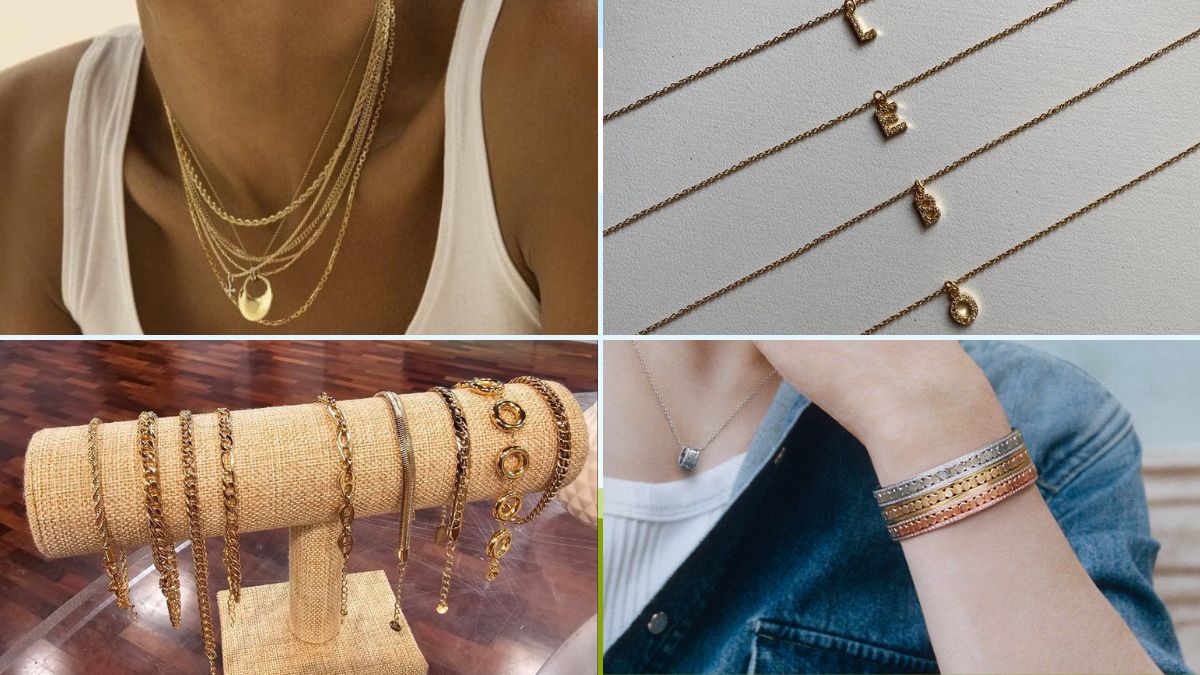Why are sky-high gold prices leading to a surprising boom in a certain category of jewellery?

All that glitters need not necessarily be gold. And diamonds may be forever, but to be trendy and in with the latest design sensibilities, perhaps it makes more sense to go for demi-fine jewellery. And that seems to be exactly what an increasing number of jewellery shoppers in the country seem to be veering towards.
"Demi-fine jewellery is gaining traction on the back of evolving consumption behaviour. Younger consumers are prioritising design, wearability, and personal expression,” said Naveen Malpani, Partner and Consumer Industry Leader with the consultancy major Grant Thornton Bharat.
“This shift is being reinforced by digital-first brands that offer 14–18K gold-plated, vermeil, and lab-grown diamond collections positioned between fine and fashion jewellery," he added.
Demi-fine jewellery, as the name literally suggests, straddles the space between high-end fine jewellery and mass-market fashion jewellery, offering a balance of the latest designs and styles along with affordability, without any inherent loss in quality.
It is usually made with vermeil: gold plated over a base of sterling silver or brass/bronze (sometimes that plating can be rhodium, too), and often embellished with semi-precious stones, pearls, cubic zirconia—and increasingly, lab-grown diamonds.
The growth has been noteworthy. India’s demi-fine jewellery market is projected to expand at a CAGR of around 12 per cent between 2025 and 2030. When BlueStone, a jewellery brand, successfully brought out its IPO and listed in August, it drew additional interest from investors in the jewellery and precious metals and stones sector, seeking the next big bet. For many, that path is leading to purveyors of demi-fine jewellery.
“This growth is being driven by rising self-purchase behaviour, gifting occasions, and demand for everyday-wear designs. High gold prices are not dampening sentiment but redirecting it toward demi-fine jewellery for those wanting aesthetic appeal and value accessibility without compromising on aspiration,” explained Malpani.
While it is not that Indians are ditching their favourite gold for demi-fine, what is happening is two-fold:
One, the price of gold is at a peak, meaning it is bought more as an investment, a family heirloom, or for a rainy day, rather than for regular use as jewellery.
The other is more a sign of the times—demi-fine, because of its cost-effectiveness and inherent quality, has become the go-to—particularly amidst GenZ, as they seek newer and trendier jewellery pieces. It is always easier to go with the latest styles with a more affordable piece (prices of demi-fine range from Rs 6,000 to Rs 1 lakh in most categories) than spend a fortune on high-end gold for a neckpiece, for example, and then realise the design has gone out of style in a year or two, right?
While traditional options like gold and diamonds still dominate the jewellery purchase space—especially when it comes to weddings as well as investments—when it comes to regular use, more and more users, especially in big cities, are veering towards demi-fine jewellery, trends indicate.
Driven by personal style, experimentation and the desire for affordable luxury, discerning clientele in metros and Tier-1 cities are making a beeline for demi-fine jewellery, as well as lab-grown diamonds.
The reason is simple. Not only do they get to experiment, as well as try more modern designs, and change often, what has investors licking their lips in anticipation is the fact that the affordability factor of this category is leading to customers making more (small-ticket) jewellery purchases in a year now, instead of the conventional mode of saving up for long for that single high-value piece.
Another significant factor has been the progress of lab-grown diamonds and their coming into their own. Prices have also dropped of lab-grown diamonds, thus leading to an expansion of the entry-base for diamond buyers.
“For retailers, this creates a clear strategic balance: gold appeals to tradition and savings-led consumers, while lab-grown and demi-fine lines attract younger, urban audiences seeking products that are aspirational, contemporary, and economically attainable,” summed up Malpani.
Business